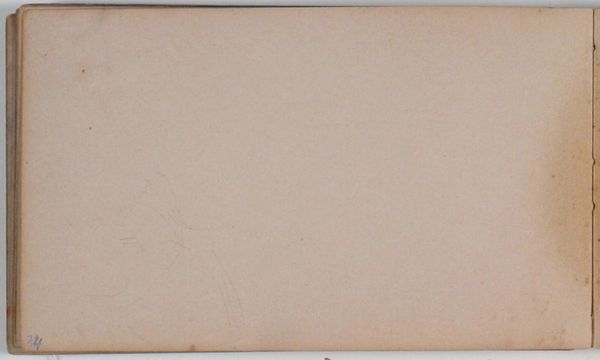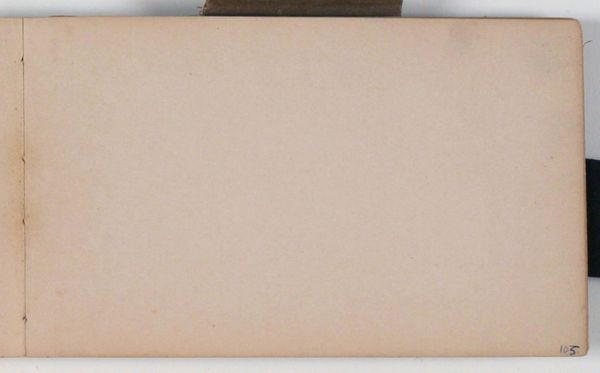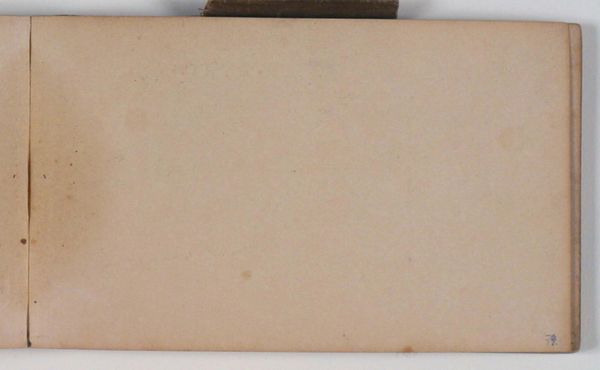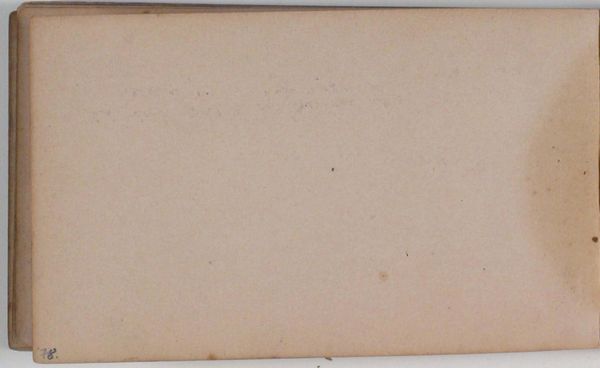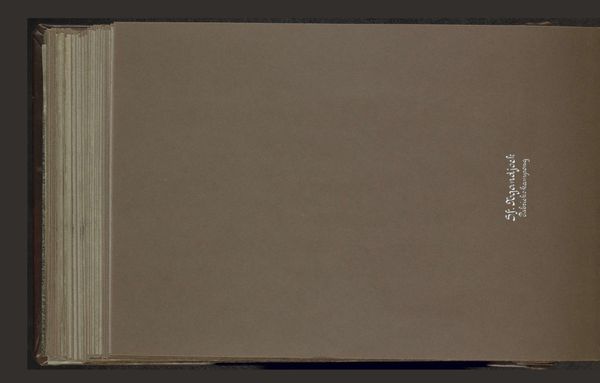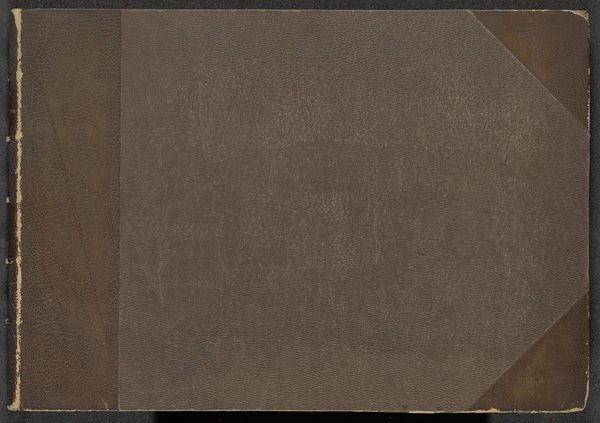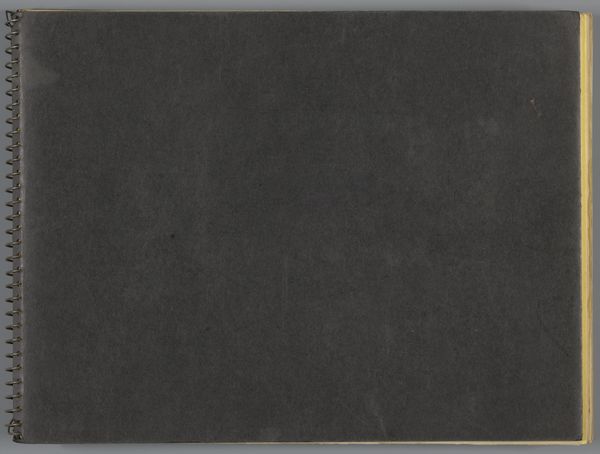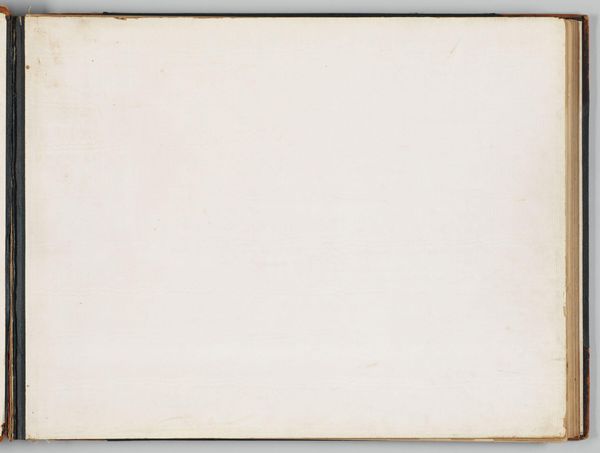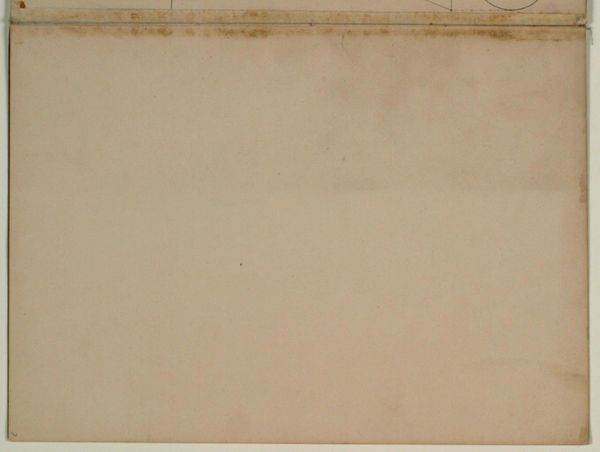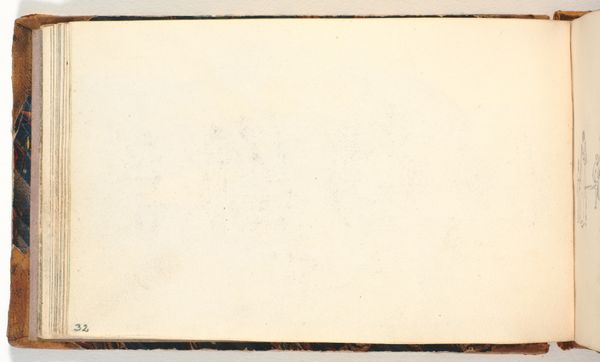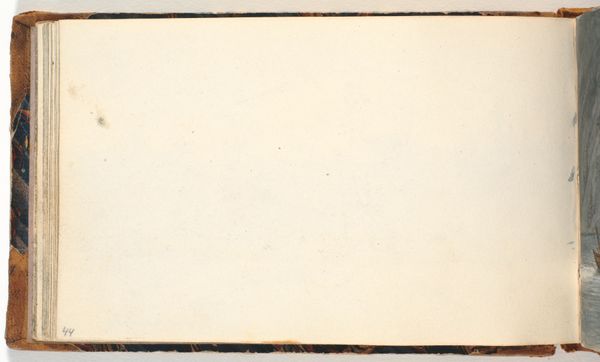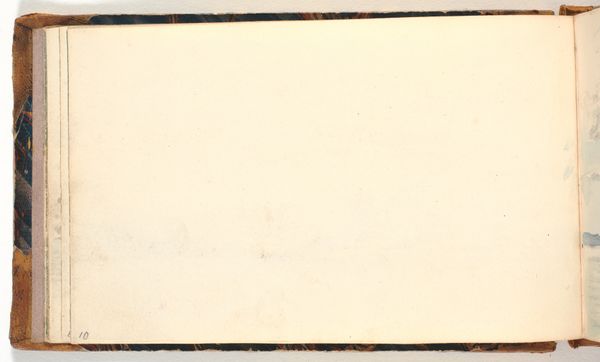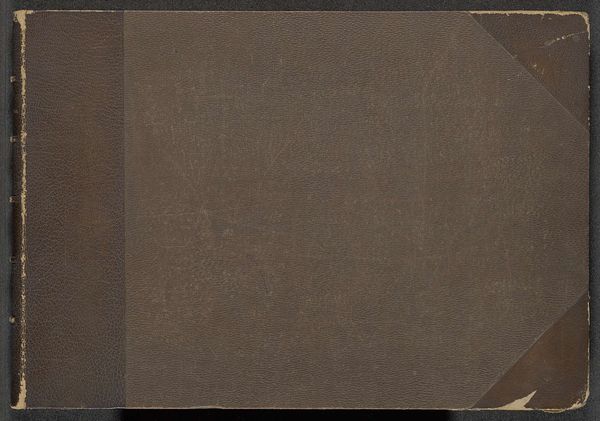
drawing, coloured-pencil, paper, photography
#
drawing
#
coloured-pencil
#
water colours
#
paper
#
photography
#
coloured pencil
Dimensions: 101 mm (height) x 168 mm (width) (bladmaal)
Curator: Our next piece is titled "Blank," attributed to Niels Larsen Stevns from 1896. It's composed of colored pencil on paper, currently held in the collection of SMK, the National Gallery of Denmark. Editor: Well, the title is apt. Visually, we're presented with a seemingly untouched sheet of paper, a beige rectangle. It's remarkably unassuming. Curator: Indeed. But consider the socio-political implications. The late 19th century was a period of intense artistic exploration, with movements like Impressionism and Symbolism challenging established norms. Stevns, as an artist embedded within this context, uses the "blank" page not merely as a void, but as a potent statement about artistic potentiality. It begs the question: what could be? Editor: From a purely formal standpoint, the tonality is subtle. It's a warm beige, almost skin-like, that dominates the field. A single vertical line near the binding suggests depth and a continuation beyond what's visible, invoking a sense of an absent picture that invites the observer's input. Is it about minimalism before the term existed? Curator: It could also reflect the artist's internal struggles and social pressures of the era. Perhaps Stevns wanted to depict a complicated societal problem, but was worried about a negative reaction, or possibly wanted to present art as a continuous dialogue that never achieves finality. Editor: I am fascinated by the texture; a subtle grain exists within the paper. Notice the slight tonal variations? They play a significant role in creating an expansive spatial dimension across an essentially flat plane, drawing you in. It makes me question the value judgments and processes that lead something as subtle as this to be considered "art." Curator: It also compels us to reflect on the act of creating and our expectations of what art should be. This 'blank' slate becomes a mirror. Who is defining 'art' and their cultural or class backgrounds, and what impact does their work and judgment have? Editor: Exactly. And considered through a formalist lens, it's also important not to ignore how the materiality of the paper interacts with ambient light, subtly transforming with our movement. This, too, shifts the nature of reception. Curator: Yes, this provokes many different possible conclusions as to the meaning behind this subtle artwork. The conversation it ignites is far more meaningful than the artwork itself. Editor: It encourages us to rethink artistic purpose. A very clever statement on potential, absent representation and value.
Comments
No comments
Be the first to comment and join the conversation on the ultimate creative platform.
